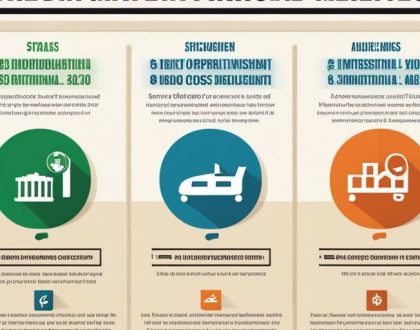Malta’s Regulatory Framework for Banking Success

Defining Prudential and Conduct Regulations can be challenging, especially in the context of Malta’s intricate financial landscape. However, understanding the robust regulatory framework in place is crucial for achieving banking success in this jurisdiction. Malta’s banking sector is governed by the Malta Financial Services Authority (MFSA), which enforces strict regulations to ensure the stability and integrity of the banking system. This comprehensive framework covers everything from capital requirements to risk management, creating a safe and attractive environment for both local and international banks to thrive.
The Evolution of Banking Regulations in Malta
The regulation of banking in Malta has undergone significant changes over the years. The sound regulatory framework has played a crucial role in shaping the country’s banking sector into the robust and stable industry it is today.
Historical Context and Key Milestones
For decades, Malta’s banking regulations were based on outdated legislation that could not keep up with the rapid changes in the global financial landscape. The Banking Act of 1994 marked a key milestone in the modernization of Malta’s banking regulations, introducing new licensing requirements and strengthening supervisory mechanisms. This laid the foundation for a more resilient and transparent banking sector.
Impact of EU Membership on Regulatory Practices
Historical EU membership in 2004 brought about a significant shift in Malta’s regulatory practices. The country had to align its banking regulations with EU directives and standards, leading to the establishment of stronger capital adequacy requirements and risk management guidelines. This not only enhanced the stability of Malta’s banking sector but also facilitated greater integration with the broader European financial system.
Milestones such as the implementation of the Basel III framework and the adoption of the Single Supervisory Mechanism have further strengthened Malta’s regulatory framework in line with international best practices, bolstering the country’s reputation as a reputable financial center.
Key Components of Malta's Banking Regulatory Framework
Some of the key components of Malta’s banking regulatory framework include licensing and supervision of banks, capital requirements and risk management practices, consumer protection and financial stability mechanisms, and anti-money laundering (AML) and counter-terrorist financing (CTF) measures. These components are crucial to the success and stability of the banking sector in Malta, ensuring compliance with international standards and best practices.
Licensing and Supervision of Banks
One of the fundamental aspects of Malta’s banking regulatory framework is the licensing and supervision of banks by the Malta Financial Services Authority (MFSA). The MFSA is responsible for granting licenses to banks that meet the established criteria and for closely supervising their operations to ensure compliance with regulatory requirements and financial soundness. This proactive approach helps to maintain the integrity and stability of the banking sector in Malta, fostering confidence among domestic and international stakeholders.
Banks operating in Malta are required to maintain adequate capital levels to mitigate risks and safeguard depositors’ funds. Additionally, they are expected to implement robust risk management practices to identify, assess, and control various forms of risk, including credit, market, and operational risk. This prudential framework contributes to the overall stability and resilience of Malta’s banking system, ensuring that banks are well-equipped to withstand potential financial shocks and uncertainties.
This comprehensive framework promotes a safe and sound banking environment in Malta, which is essential for attracting foreign investment and fostering economic growth. By adhering to international best practices and regulatory standards, Maltese banks are able to operate with confidence and credibility, both domestically and internationally, creating a solid foundation for sustainable banking success.
Consumer Protection and Financial Stability Mechanisms
Banks in Malta are required to implement robust consumer protection measures, including transparent and fair practices in their dealings with customers. Additionally, the banking regulatory framework includes mechanisms to ensure financial stability, such as deposit insurance schemes and resolution frameworks to address potential bank failures. These measures safeguard the interests of consumers and contribute to the overall resilience of the banking sector in Malta, promoting trust and stability.
Malta’s commitment to consumer protection and financial stability also extends to promoting financial literacy and education among consumers, empowering them to make informed financial decisions and protect their interests. This proactive approach enhances the overall integrity of the banking system in Malta, fostering a positive and sustainable banking environment for all stakeholders.
Anti-Money Laundering (AML) and Counter-Terrorist Financing (CTF) Measures
For Malta, stringent AML and CTF measures form an integral part of the banking regulatory framework, aimed at preventing illicit financial activities and mitigating associated risks. Banks are required to implement comprehensive AML and CTF policies and procedures, conduct thorough due diligence on customers, and report any suspicious transactions to the relevant authorities. By adhering to these measures, banks play a crucial role in maintaining the integrity of Malta’s financial system and safeguarding it against illicit activities and threats.
Plus, Malta collaborates with international partners and regulatory bodies to enhance the effectiveness of its AML and CTF measures. This proactive approach underscores Malta’s commitment to combating financial crime and reinforces its position as a responsible and compliant jurisdiction in the global banking landscape.
Challenges and Opportunities
To achieve success in the banking sector, Malta must navigate various challenges and capitalize on emerging opportunities. The regulatory framework plays a crucial role in addressing these factors and shaping the future of the industry.
Current Regulatory Challenges Facing Malta's Banking Sector
Challenges such as compliance with international standards, anti-money laundering measures, and cybersecurity threats pose significant hurdles for Malta’s banking sector. Meeting regulatory requirements while ensuring operational efficiency can be a demanding task for financial institutions. Additionally, the evolving nature of financial crime necessitates constant vigilance and adaptation to stay ahead of illicit activities. Striking a balance between regulatory compliance and customer experience is an ongoing challenge that the Maltese banking sector faces.
Moreover, the cross-border nature of banking operations introduces complexities in aligning with diverse regulatory environments across multiple jurisdictions. This requires robust mechanisms for harmonizing compliance efforts while operating on an international scale.
Opportunities for Growth and Development through Enhanced Regulation
Regulatory enhancements can serve as catalysts for sustainable growth and development within Malta’s banking industry. By embracing technological advancements and fostering an environment conducive to innovation, the regulatory framework can facilitate an agile and resilient banking ecosystem. Streamlining regulatory processes and fostering collaboration between regulatory bodies and financial institutions can result in more efficient compliance and greater transparency.
The sector also has the opportunity to capitalize on emerging markets and diversify its offerings. Well-defined regulations that support ethical conduct and financial inclusion can pave the way for increased market penetration and a more robust banking landscape in Malta.
Summing up
Taking this into account, it is evident that Malta’s regulatory framework for banking has been instrumental in fostering success within the industry. The robust framework, which adheres to both European and international standards, has created a stable and secure banking environment in Malta. This has in turn bolstered investor confidence, facilitated innovation and growth, and ensured the protection of the interests of all stakeholders. By consistently evolving and adapting to the changing global landscape, Malta’s regulatory framework for banking is well-positioned to continue to underpin the success and sustainability of the banking sector in the country.
Frequently Asked Questions (FAQs):
What is the role of the Malta Financial Services Authority (MFSA) in regulating Malta’s banking sector?
The MFSA plays a pivotal role in licensing and supervising banks, ensuring compliance with regulatory requirements and fostering financial stability.
How has Malta’s banking regulatory framework evolved over the years?
The framework has evolved significantly, with key milestones like the Banking Act of 1994 and EU membership in 2004 shaping a more resilient and transparent banking sector.
What are the key components of Malta’s banking regulatory framework?
Components include licensing and supervision, capital requirements, risk management, consumer protection, financial stability mechanisms, and AML/CTF measures.
How does Malta address challenges such as cybersecurity threats in its banking sector?
Malta addresses challenges through regulatory enhancements, embracing technology, and fostering collaboration to ensure a secure and resilient banking ecosystem.
What opportunities does Malta’s banking sector have for growth and development?
Opportunities include embracing technological advancements, enhancing regulatory processes, and capitalizing on emerging markets to foster a more robust banking landscape.
Recommended Posts

Discover iGaming Opportunities in Malta
July 26, 2024

Financial Aspects of Doing Business in Malta
July 26, 2024

EveryMatrix & beBettor Ensure Safer UK Gambling
July 26, 2024




